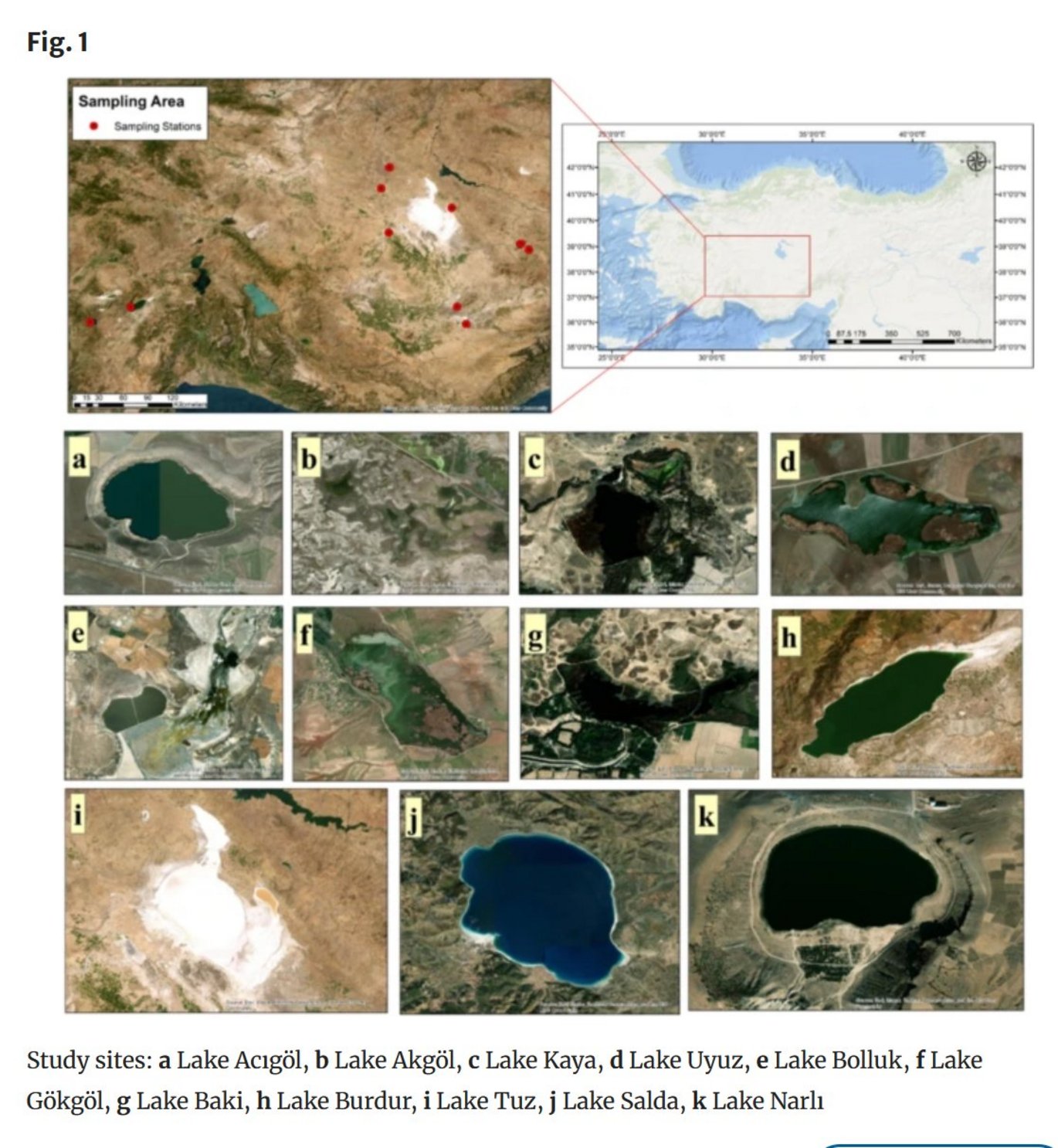Changes in microplastic-associated bacterial communities along a salinity gradient in Central Anatolian lakes of Türkiye
New publication by Kerem Gökdağ, Tülay Pekmez, Gülçin Akca, Mustafa Korkmaz, Juan Pablo Pacheco, Gökben Başaran Kankılıç, Cemreay Dede, Korhan Özkan, Meryem Beklioğlu, Erik Jeppesen, Zuhal Akyürek, Ülkü Nihan Tavşanoğl

Abstract:
Lakes face anthropogenic stressors such as climate change, salinization, and eutrophication, and microplastics (MPs) now emerge as a new concern since they act as vectors for pathogenic bacteria, giving rise to concern about environmental health. This study explores cultivable viable bacterial (CVB) biofilm communities on MPs along a salinity gradient (0.25 to 192.69‰) in 11 lakes in Türkiye. The MPs consisted mainly of fibers and 50-µm to 5-mm-sized fragments. The dominant cultivable bacterial phyla in both MP-associated biofilms and lake water were Proteobacteria and Firmicutes. On MPs, Pseudomonadaceae was the dominant family (94.7%), followed by Enterobacteriaceae (1.2%). Various halolerant pathogens occurred as well, e.g., Proteus spp. strains on MP surfaces in Lake Bolluk (95.7‰) and Alcaligenes spp. in Lake Tuz, the two lakes with the highest salinity, while the halophilic Shewanella putrefaciens was prevalent in highly alkaline Lake Salda. Staphylococcus, Commomonas, and Enterobacter were found in all lakes regardless of salinity level, and CVB strains were more common on MPs surfaces than in lake water. Our findings suggest that MPs promote the development, dispersion, and bioavailability of bacteria, including pathogens, thus increasing ecological and health-related impacts in lakes under different salinity conditions.
https://doi.org/10.1007/s10750-025-05844-y
